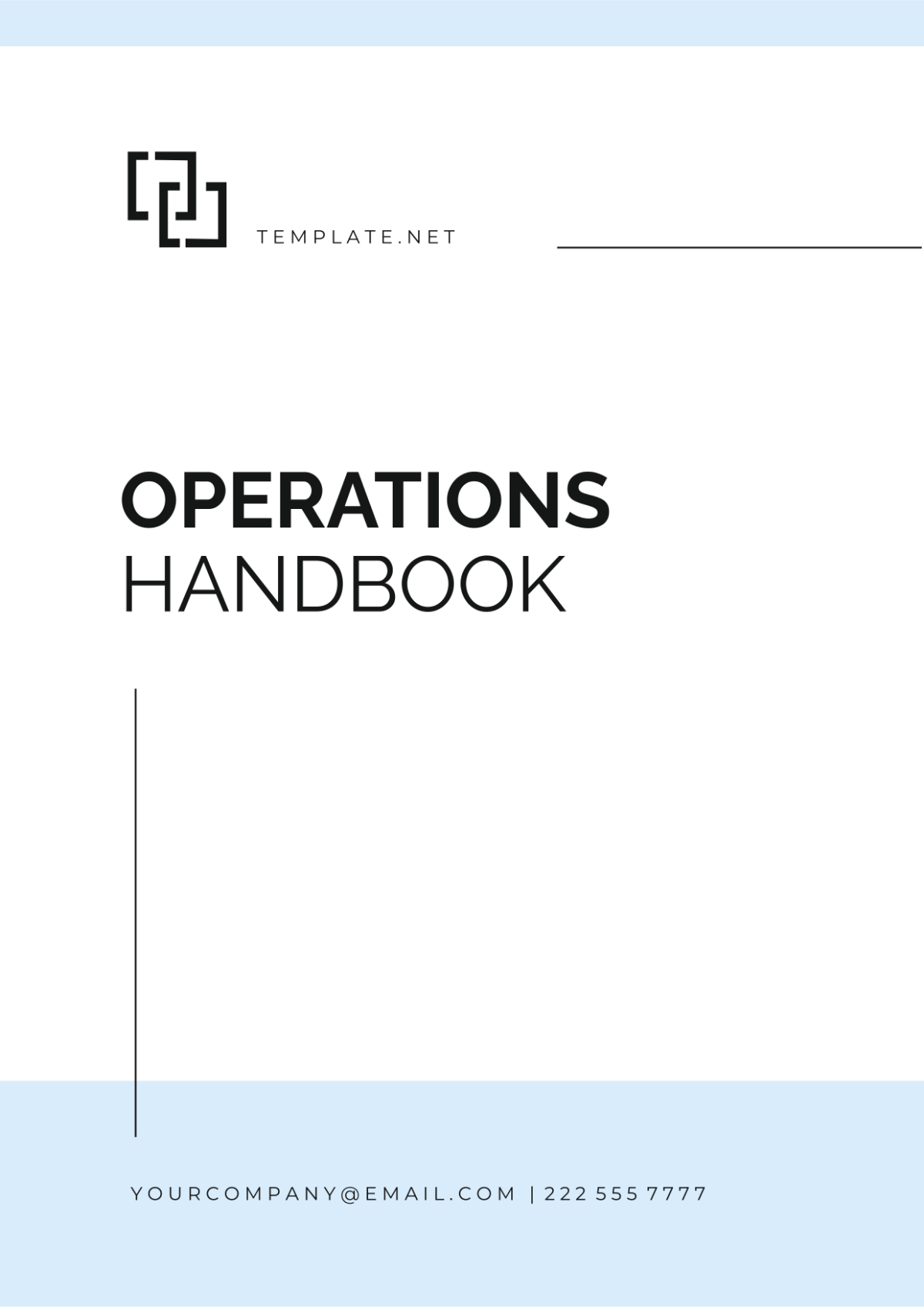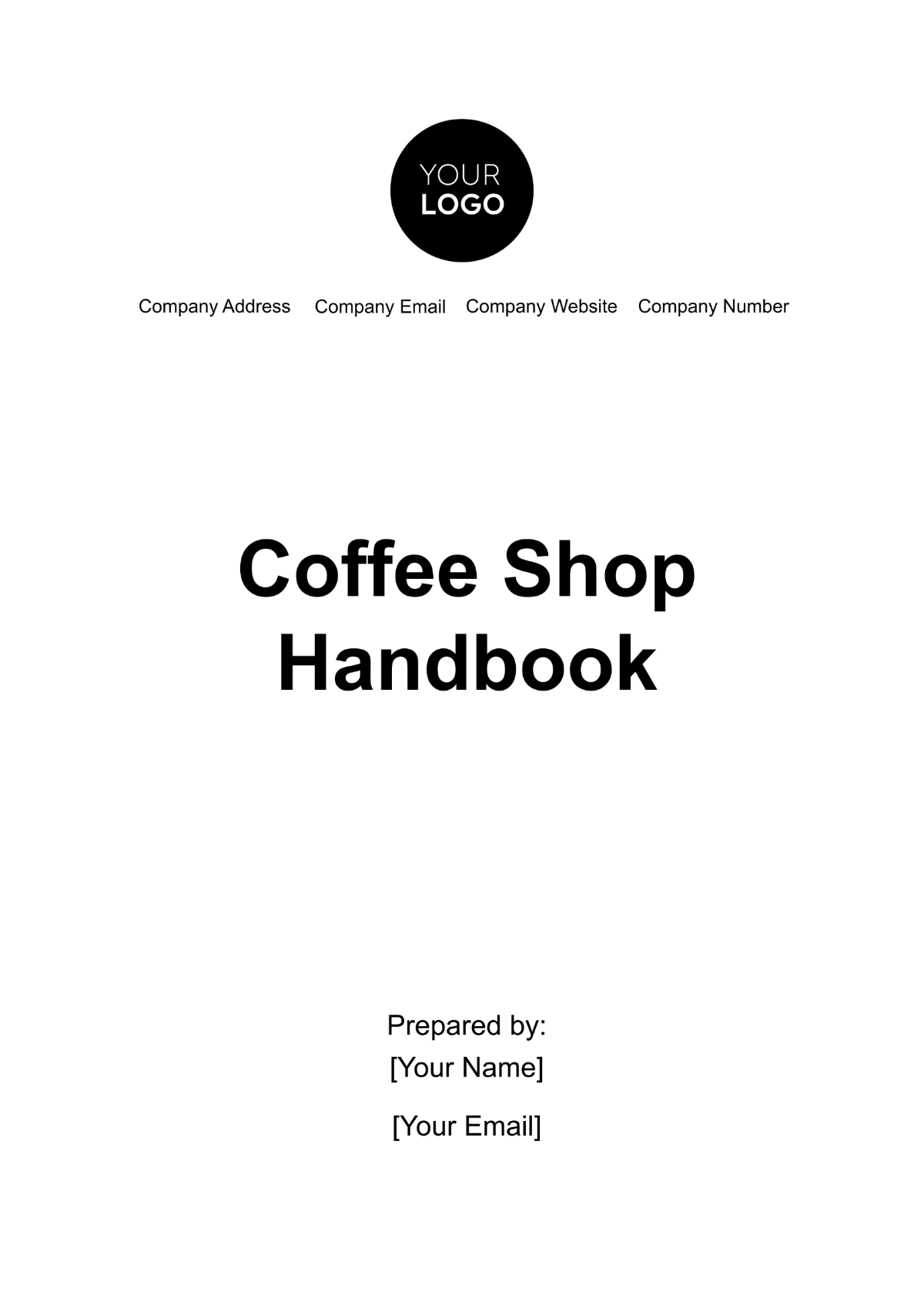Operations Customer Relationship Management Handbook
I. Introduction
A. Purpose of the Handbook
The purpose of this handbook is to serve as a comprehensive guide to Customer Relationship Management (CRM) within our operations. It is designed to provide a thorough understanding of CRM principles, strategies, tools, and measures of success. It aims to empower our team with the knowledge and skills necessary to effectively manage customer relationships and contribute to the company’s success.
B. Scope of the Handbook
The scope of this handbook extends beyond the basic understanding of CRM. It delves into the strategic implementation of CRM in our operations, the use of CRM tools and technologies, and the measurement of CRM success. It also includes practical examples and case studies to provide a real-world context to the theoretical concepts.
C. Target Audience
This handbook is intended for:
Operations Team: The primary audience of this handbook. It provides them with the necessary knowledge and tools to manage customer relationships effectively.
Sales and Marketing Teams: These teams can benefit from understanding how CRM strategies can help in customer acquisition and retention.
Customer Service and Support Teams: These teams can use the handbook to understand how CRM can improve customer satisfaction and loyalty.
All Employees: A basic understanding of CRM is beneficial for all employees as it impacts every aspect of our business.
II. Understanding Customer Relationship Management (CRM)
A. Definition of CRM
Customer Relationship Management (CRM) is a strategic approach that focuses on creating and maintaining meaningful relationships with customers. It involves using technology to organize, automate, and synchronize sales, marketing, customer service, and technical support processes. CRM is not just about installing software or automating business processes; instead, it’s about improving the quality of the relationships you have with your customers.
B. Importance of CRM in Operations
CRM is a critical component in the operations of any organization due to the following reasons:
Enhanced Customer Experience: CRM systems provide a 360-degree view of customers, allowing operations teams to understand customer behavior and preferences, thereby enhancing the customer experience.
Streamlined Processes: CRM systems help in automating and streamlining various customer-related operations processes, thereby increasing efficiency and productivity.
Data-Driven Decisions: CRM systems provide valuable data that can be used to make informed decisions, helping to align operations with business strategy.
C. Benefits of Effective CRM
Implementing CRM effectively can lead to numerous benefits:
Increased Customer Loyalty: By providing personalized experiences and meeting customer needs, CRM helps in building customer loyalty.
Improved Cross-Selling and Up-Selling Opportunities: With a better understanding of customer needs and behaviors, operations teams can identify opportunities for cross-selling and up-selling, thereby increasing revenue.
Better Communication: CRM systems provide a platform for better communication within the team and with customers, leading to improved collaboration and customer service.
Cost Savings: By automating and streamlining processes, CRM systems can lead to significant cost savings in the long run.
III. CRM Strategies
A. Understanding Customer Needs
The cornerstone of any successful CRM strategy is a deep understanding of customer needs. This involves:
Market Research: This involves conducting comprehensive market research to gain insights into customer preferences, buying habits, and unmet needs. It includes studying market trends, competitor strategies, and customer behavior.
Customer Segmentation: This involves categorizing customers into distinct groups based on various factors such as demographics, buying behavior, and psychographics. This segmentation allows for a more personalized approach to meeting customer needs.
Customer Feedback: This involves actively seeking and analyzing customer feedback. Regular surveys, interviews, and feedback forms can provide invaluable insights into customer expectations and areas of improvement.
B. Building Customer Relationships
Building and nurturing strong customer relationships is at the heart of CRM. This can be achieved through:
Personalization: This involves tailoring interactions and communications based on individual customer preferences and past behavior. Personalization can significantly enhance the customer experience and foster customer loyalty.
Regular Communication: This involves maintaining regular contact with customers through various channels. Regular updates about new products, services, or offers help keep the company at the top of the customer’s mind.
Excellent Customer Service: This involves addressing customer issues and concerns promptly and effectively. Quick resolution of problems and proactive communication can significantly enhance customer satisfaction and loyalty.
C. Managing Customer Interactions
Effective management of customer interactions is crucial in CRM. This involves:
Multi-Channel Interaction: This involves managing customer interactions across various channels like email, phone, social media, and in-person meetings. A consistent and seamless customer experience across all channels is key to customer satisfaction.
Customer Journey Mapping: This includes tracking the customer’s journey across all touchpoints with the company. Understanding this journey can help identify opportunities for enhancing the customer experience.
Effective Use of CRM Systems: CRM systems can track and manage all customer interactions, providing a single view of the customer. Effective use of these systems can lead to more personalized interactions and better customer service.
IV. CRM Tools and Technologies
Now, we will delve into the various tools and technologies that can be employed in CRM. These tools and technologies not only facilitate the implementation of CRM strategies but also enhance the efficiency and effectiveness of CRM practices. The following table provides an overview of some commonly used CRM tools and their key features:
CRM Tool | Key Features |
|---|---|
Salesforce | Comprehensive customer view, sales forecasting, collaboration tools, mobile access |
HubSpot CRM | Contact management, email tracking, meeting scheduling, live chat |
Zoho CRM | Sales automation, performance management, predictive analytics, process management |
Microsoft Dynamics 365 | Sales insights, customer service hub, field service, project service automation |
Pipedrive | Sales pipeline management, email integration, goal setting and reporting |
Different CRM tools offer a variety of features. The choice of CRM tool can significantly impact the effectiveness of CRM practices. Therefore, it’s crucial to choose a tool that aligns with the organization’s CRM strategy and meets its specific needs. It’s important also to note that the use of CRM tools and technologies can significantly enhance the effectiveness of CRM practices. These tools not only automate and streamline various CRM processes but also provide valuable insights into customer behavior and preferences, which can inform CRM strategies.
Moreover, CRM tools can improve communication and collaboration within the team, leading to better coordination and improved customer service. They also provide a centralized platform for managing customer interactions, ensuring a consistent and seamless customer experience. Overall, the adoption of appropriate CRM tools and technologies is crucial for implementing effective CRM practices and achieving CRM objectives. It’s an investment that can lead to improved customer satisfaction, increased customer loyalty, and ultimately, business growth.
V. Measuring CRM Success
A. Key Performance Indicators (KPIs)
Key Performance Indicators (KPIs) are quantifiable measures used to evaluate the success of an organization, employee, etc., in meeting objectives for performance. In the context of CRM, KPIs can help measure the effectiveness of CRM strategies and practices. The table below showcases commonly used CRM KPIs and their descriptions:
KPI | Description |
|---|---|
Customer Retention Rate | Measures the percentage of customers the company has retained over a given period. |
Customer Satisfaction Score (CSAT) | Measures customer satisfaction with a company’s products or services. |
Net Promoter Score (NPS) | Measures customer loyalty to a company. |
Customer Lifetime Value (CLV) | Predicts the net profit attributed to the entire future relationship with a customer. |
Conversion Rate | Measures the percentage of potential customers who take a specific action. |
Each of these KPIs provides valuable insights into different aspects of CRM. For instance, the Customer Retention Rate can provide insights into the effectiveness of customer retention strategies, while the Customer Satisfaction Score can indicate the level of customer satisfaction with the company’s products or services. Similarly, the Net Promoter Score can provide insights into customer loyalty, and the Customer Lifetime Value can predict the profitability of the customer relationship. Lastly, the Conversion Rate can provide insights into the effectiveness of sales and marketing strategies.
In a nutshell, KPIs play a crucial role in measuring the success of CRM practices. They provide quantifiable measures that can help assess the effectiveness of CRM strategies and practices. It not only helps assess the effectiveness of CRM practices but also provides valuable insights that can inform future CRM strategies. Moreover, measuring CRM success can help identify areas of improvement, enabling us to enhance our CRM practices and achieve better results. It’s a continuous process that involves regular tracking of KPIs, collecting and analyzing customer feedback, and making necessary improvements.
B. Customer Satisfaction Surveys
Customer Satisfaction Surveys are a valuable tool for measuring CRM success. They provide direct feedback from customers about their experiences and perceptions of the company’s products or services. Here’s how to make the most of them:
Designing the Survey: The survey should be designed to capture key aspects of the customer’s experience. This could include questions about the quality of the product or service, the buying process, customer service interactions, and overall satisfaction.
Distributing the Survey: The survey should be distributed to a representative sample of customers. This could be done through various channels such as email, social media, or in-person.
Analyzing the Results: The results of the survey should be analyzed to identify trends and areas for improvement. This could involve calculating average scores, identifying areas with low scores, and looking at individual comments for insights.
Taking Action: Based on the results of the survey, actions should be taken to improve the customer experience. This could involve addressing specific issues identified in the survey, making improvements to products or services, or training staff on customer service skills.
C. Regular Review and Improvement
Regular review and improvement are crucial for the success of CRM practices. This involves:
Regular Monitoring: CRM practices should be regularly monitored to ensure they are being implemented effectively. This could involve tracking KPIs, reviewing customer feedback, and observing staff interactions with customers.
Identifying Areas for Improvement: Based on the monitoring, areas for improvement should be identified. This could involve areas where KPIs are not being met, where customer feedback is negative, or where staff are struggling to implement CRM practices effectively.
Implementing Improvements: Once areas for improvement have been identified, action plans should be developed and implemented to address these areas. This could involve training staff, improving processes, or investing in new CRM tools.
Reviewing the Impact of Improvements: After improvements have been implemented, their impact should be reviewed. This could involve tracking KPIs, collecting customer feedback, and observing staff interactions with customers.
VI. Final Remarks
A. Summary of Main Points
CRM is a strategy that focuses on managing a company’s interactions with its customers, playing a significant role in operations by aiding in customer retention, enhancing operational efficiency, and providing valuable data for informed decision-making. Various CRM strategies, tools, and technologies enhance the efficiency and effectiveness of CRM practices. The measurement of CRM success involves Key Performance Indicators (KPIs), customer satisfaction surveys, and regular review and improvement.
B. Future Outlook
CRM is expected to evolve with advancements in technology and changing customer expectations. Future trends in CRM may include the increasing use of artificial intelligence, growing importance of data privacy, and a shift towards more customer-centric operations.
In conclusion, CRM is not merely a strategy or a tool, but a philosophy that places customers at the core of business operations. It involves building and nurturing relationships, understanding and meeting customer needs, and continually striving to enhance the customer experience. As we progress, CRM is expected to continue being a key driver of business growth and success.
VII. Frequently Asked Questions (FAQs)
Q1: What is CRM?
A: CRM, or Customer Relationship Management, is a strategy for managing a company’s interactions with current and potential customers. It involves using data analysis about customers’ history with a company to improve business relationships with customers, specifically focusing on customer retention and ultimately driving sales growth.
Q2: Why is CRM important in operations?
A: CRM is crucial in operations as it helps in maintaining and enhancing customer relationships, leading to higher customer retention rates. It also provides a streamlined process for managing customer interactions, leading to increased operational efficiency. Moreover, CRM systems provide valuable data that can be analyzed to gain insights into customer behavior and preferences, which can inform business decisions.
Q3: What are some common CRM tools?
A: Some commonly used CRM tools include Salesforce, HubSpot CRM, Zoho CRM, Microsoft Dynamics 365, and Pipedrive. Each tool has its unique features and can be chosen based on the specific needs and requirements of the organization.
Q4: How can CRM success be measured?
A: CRM success can be measured using Key Performance Indicators (KPIs), customer satisfaction surveys, and regular review and improvement. KPIs provide quantifiable measures of the effectiveness of CRM strategies and practices. Customer satisfaction surveys provide direct feedback from customers, and regular review and improvement ensure that CRM practices are continually meeting and exceeding customer expectations.
Q5: What are the benefits of effective CRM?
A: Effective CRM can lead to increased customer loyalty, improved cross-selling and up-selling opportunities, better internal communication, and cost savings. By understanding and meeting customer needs, companies can increase customer satisfaction. With improved customer retention and loyalty, companies can see an increase in revenue.

















































